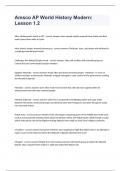Samenvatting
Capital structure & Financial planning summary of book, lectures and tutorials
- Instelling
- Rijksuniversiteit Groningen (RuG)
- Boek
- Corporate Finance
YOU CAN ALSO BUY THEM DIRECTLY FROM ME FOR €6: This summary includes everything: Book, lectures, and tutorials.
[Meer zien]














